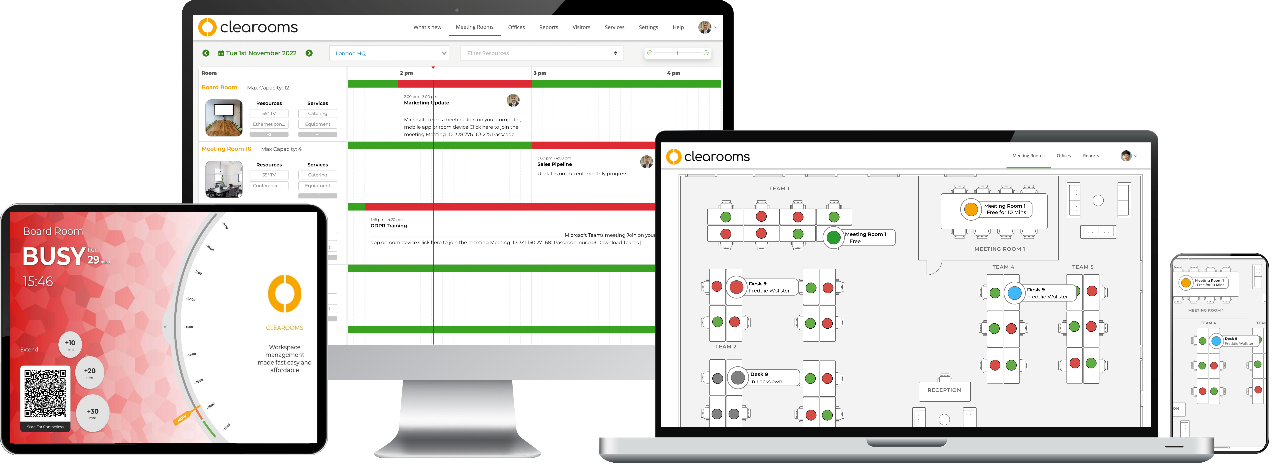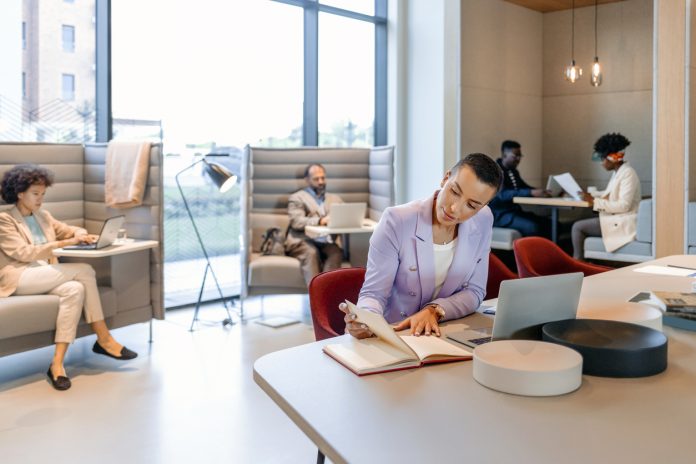As hybrid working becomes a permanent fixture in the UK public sector, organisations are seeking more efficient and cost-effective ways to manage their workspaces. Clearooms, a leading provider of desk and room booking solutions, is helping public bodies navigate this shift
In this exclusive interview, Tony Gibson (TG), Co-Founder and Managing Director, and Alex Wight (AW), Co-Founder and CTO, discuss how the Clearooms platform supports the public sector in optimising their hybrid workplaces.
Q: Why is workspace management such a critical issue for the public sector today?
TG: There’s increasing scrutiny over how public money is spent, and estate costs are a big part of the budget. With hybrid working now the norm, public sector bodies can no longer afford to have empty desks or under-utilised meeting rooms. Managing space efficiently is no longer a ‘nice to have’ – it’s a financial and operational necessity.
AW: Exactly. Hybrid work has introduced new complexities. People aren’t in the office five days a week, but when they are, they need access to the right tools, desks, and spaces. Without the right system in place, that variability creates friction and inefficiencies.
Q: What role does Clearooms play in tackling these challenges?
AW: We offer intuitive room and desk booking tools that adapt to how people actually work. Features such as auto-release of unclaimed bookings and integrations with access control systems make the experience seamless for both users and facilities teams.
TG: It’s not just about booking a desk, it’s about ensuring that every part of the estate is being used effectively. Our platform helps estate managers gather accurate usage data, reduce waste, and make informed decisions about consolidation or repurposing.
Q: How does Clearooms integrate with Microsoft calendars? Is there a two-way sync for meeting room bookings?
AW: Absolutely; integration with Microsoft calendars, especially Outlook and Microsoft 365, is a key part of the Clearooms platform. We’ve built a true two-way sync, meaning that when a meeting room is booked in Clearooms, it instantly shows up in the user’s Outlook calendar. And it works the other way around, too: if someone books a meeting directly in Outlook, it automatically updates Clearooms and any connected digital displays outside the meeting rooms. This ensures that staff can use the tools they’re familiar with, without needing to duplicate bookings or worry about conflicts. Everything stays perfectly aligned across Clearooms, Outlook, and the room screens, in real-time.
TG: It’s all about removing friction. We make sure that bookings are visible wherever they need to be, so whether someone is looking at their calendar, the Clearooms app, or a meeting room display, they always have the right information. It improves reliability, saves time, and makes hybrid working much easier to manage.

Q: Security is often a concern, particularly in government environments. How do you address that?
AW: Security is built into every part of Clearooms. Our system is hosted with Amazon Web Services (AWS) in highly secure, European data centres, with built-in backup and protection against downtime. We protect the platform with multiple layers of security, including robust firewalls, automated monitoring for suspicious activity, and protection against cyberattacks such as DDoS.
All data, whether stored or being transferred, is encrypted to keep it safe, and we take daily backups to ensure nothing is lost. We also manage user access very carefully – using industry-standard secure login methods (OAuth 2), along with Single Sign-On (SSO), so staff can log in easily and securely with their existing workplace accounts. We also support SCIM (System for Cross-domain Identity Management), which enables the automatic creation, updating, and removal of user accounts, allowing IT teams to stay in control without additional manual work.
Q: How does ‘auto-release’ help manage no-shows and last-minute booking issues while improving space utilisation?
TG: Auto-release is one of those features that delivers massive value quietly. If someone books a desk but doesn’t turn up or forgets to check in, the system automatically frees up that space. In high-demand environments, such as councils or health trusts, this means someone else can use the space. It’s simple, but it improves occupancy rates.
AW: No-shows are a huge issue. That’s why we introduced automatic cancellation for bookings if no one checks in. It’s better for everyone; those needing space can gain access, and it eliminates the administrative headache of manually chasing or adjusting bookings. We’ve designed this to be configurable as well, so teams can set the check-in window based on their operational needs. It’s all about maximising value from existing space. We also allow organisations to implement booking cut-off times, helping ensure planning, especially when rooms are used for sensitive or strategic meetings.
Q: Can you tell us about ‘setup’ and ‘clean down’ times – how do they enhance meeting room management?
TG: We found that back-to-back bookings were causing issues – rooms wouldn’t be ready, or there’d be confusion over timings. We have built in the ability to automatically add setup and clean-down time buffers.
AW: These buffers ensure that equipment can be set up, furniture rearranged, or cleaning completed between meetings. It avoids scheduling conflicts and keeps things professional.
Q: Adjusting meeting room bookings can be a pain. How does Clearooms simplify that?
AW: Our drag-and-drop functionality is built for flexibility. Do you need to extend a meeting or relocate it to another room? Just drag and drop. It’s faster, more intuitive, and helps users adapt to changes without causing scheduling chaos.
TG: It reduces errors and makes estate management more dynamic, especially in environments where plans change often.
Q: Let’s talk about data. How can public sector organisations use data insights from Clearooms?
TG: Our platform offers analytics that reveal usage trends, desk occupancy, and even indicators of employee wellbeing. These insights support smarter estate planning, such as identifying under-utilised areas or predicting peak usage times.
AW: We’ve also seen organisations use this data to support HR policies, such as detecting potential burnout patterns or ensuring teams aren’t isolated. It’s about continuously improving how space and people are managed.
Q: What’s the big picture here? What does the future of hybrid work look like in the public sector?
TG: The future is about doing more with less. The public sector is being asked to deliver better services on tighter budgets. Hybrid working, when managed well, is an opportunity to optimise estate usage and improve employee satisfaction simultaneously.
AW: Technology is the enabler, but it’s the strategy that matters. Tools like Clearooms provide the foundation for a more agile, data-informed, and sustainable way of working.
Q: Final thoughts – what’s your advice for public sector leaders starting their hybrid workplace journey?
TG: Start with clarity; know what your goals are. Then choose tools that align with those goals, not just what’s cheapest. Look for features that deliver ongoing value, such as automation and analytics.
AW: And don’t underestimate user experience. Adoption is everything. If your system isn’t easy to use, people won’t engage with it. That’s where we’ve put our focus – and it’s why we’ve seen such strong uptake across the public sector.
For more information or to request a demo, visit Clearooms.com or email sales@clearooms.com

This work is licensed under Creative Commons Attribution-NonCommercial-NoDerivatives 4.0 International.











